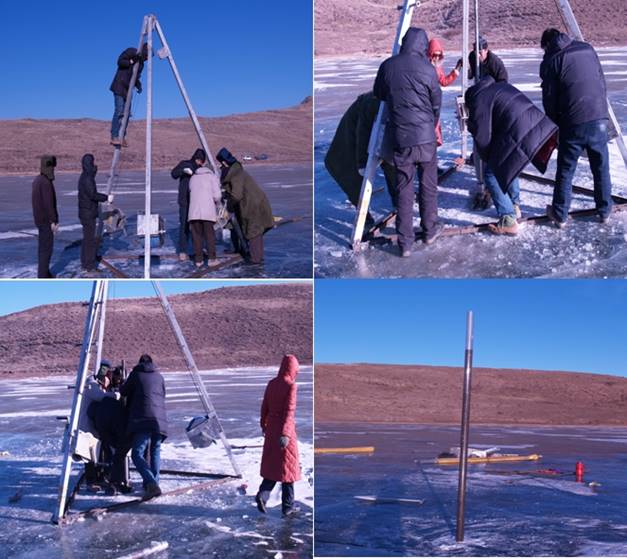Based on the alpine lake sediment records dating back to 2250 years, the population of dust source areas, summer monsoon rainfall and sandstorm intensity, the team led by Academician Chen Fahu from the Key Laboratory of Western China’s Environmental Systems (Ministry of Education), Lanzhou University, claimed that two thousand years ago human activities have been the major factor causing dust-storm in Asia.

The team drilled the ice core from the lake
The study result entitled "Asian dust-storm activity dominated by Chinese dynasty changes since 2000 BP" has been published in Nature Communicatons, which would provide a scientific basis for human activities and afforestationpolicy in arid and semi-arid regions of northern China. Lanzhou University is the first institution of the article funded by the National Natural Science Foundation of China. Academician Chen Fahu and Chen Shengqian, a PhD from the College of Earth and Environmental Sciences of Lanzhou University, are the co-first authors. The co-corresponding authors are Academician Chen Fahu and Professor Liu Jianbao from the Institute of Tibetan Plateau Research Chinese Academy Sciences.

Comparison of dust-storm records (b) and dust source area population (a) and summer monsoon rainfall (c) in the past 2000
In recent years, the team led by Academician Chen Fahu has made many achievements in the field of monsoon climate change and its impact. Especially in the Holocene East Asian summer monsoon evolution history and its driving mechanism, the different lake ecosystems evolution due to the natural and anthropogenic warm summer monsoon changes, and the impact of human activities on surface processes under the background of the East Asian summer monsoon, numerous important breakthroughs have been made and continually published in top international journals such as Nature Climate Change, Nature Communications, and Proceedings of the National Academy of Sciences, which greatly expanded and enriched Geography research and perfected the theory of the East Asian summer monsoon system.